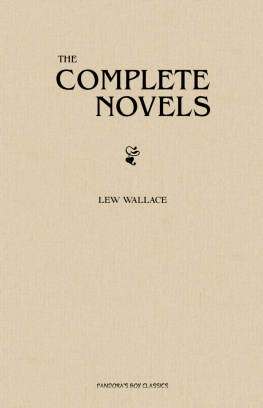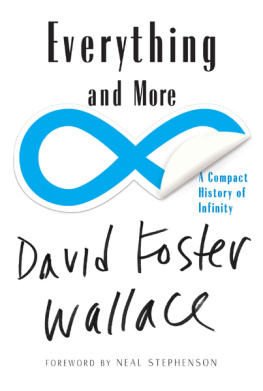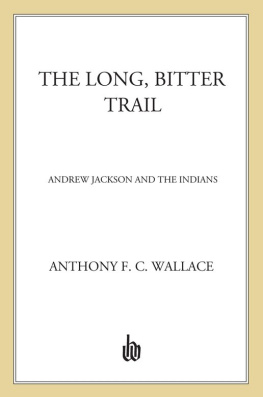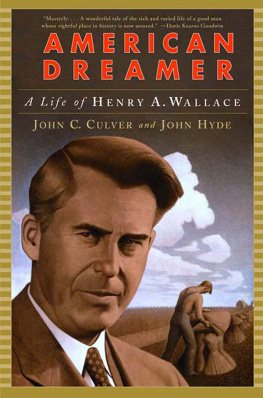Tribal Worlds: Critical Studies in American Indian Nation Building
Brian Hosmer and Larry Nesper, editors
Tuscarora
A History
Anthony F. C. Wallace
Cover Map: Guy Johnson and E. B. O'Callaghan. To His Excellency William Tryon Esqr., Captain General & Governor in Chief of the Province of New-York & &: This Map of the Country of the VI. Nations Proper, with Part of the Adjacent Colonies Is Humbly Inscribed. Albany, N.Y.: C. Van Benthuysen, 1851. Published in O'Callaghan, E.B. The documentary history of the state of New York. 1851, v. 4, p. 661. Courtesy of Stony Brook University Libraries.
Published by State University of New York Press, Albany
2012 State University of New York
All rights reserved
Printed in the United States of America
No part of this book may be used or reproduced in any manner whatsoever without written permission. No part of this book may be stored in a retrieval system or transmitted in any form or by any means including electronic, electrostatic, magnetic tape, mechanical, photocopying, recording, or otherwise without the prior permission in writing of the publisher.
For information, contact State University of New York Press, Albany, NY
www.sunypress.edu
Production by Eileen Meehan
Marketing by Kate McDonnell
Library of Congress Cataloging-in-Publication Data
Wallace, Anthony F. C., 1923
Tuscarora : a history / Anthony F. C. Wallace.
p. cm. (Tribal worlds: critical studies in American Indian nation building)
Includes bibliographical references and index.
ISBN 978-1-4384-4429-1 (hardcover : alk. paper)
1. Tuscarora IndiansHistory. 2. Tuscarora IndiansSocial life and customs. I. Title.
E99.T9.W33 2012
305.897'55dc23
2012000731
10 9 8 7 6 5 4 3 2 1
To Wendy and Jim,
and Mina and Terrie Bear and Monty,
and to the Tuscarora Nation
Acknowledgments
My first acknowledgment must be to the Tuscarora community, particularly to the members and friends of the Bissell family network, and most especially to Jim and Wendy Bissell, in whose house I lived for several years. They have treated me as family and helped me in my research and in many of the concerns of living. To many other individuals, some of whom are not named in the text, I owe a debt of gratitude for their hospitality and for sharing their knowledge of Tuscarora history and present-day life on the Reserve. But I want to mention a few: the members of the Chiefs' Council, including Leo Henry, Kenneth Patterson, and Stuart Patterson; Eli and Lena Rickard, Jay and Theresa Clause, Lois Jircitano, Norton and Marlene Rickard, Donald and Alexis Robinson and their daughter Arien, Walter and Frances Printup, Cyril and Agnes Printup and their family, Brian Printup, and his partner Neil Patterson, Jr., Director of the Environmental Program, Claudia Troiano, and the teachers in the Tuscarora Culture program, Betsy Bissell, JoAnne Weinholtz, and Vince Schiffert.
Several members of the academic community have been particularly encouraging and supportive: Richard Hill, Jr., Oren Lyons, and John Mohawk, Haudenosaunee scholars, faculty and consultants at SUNY Buffalo, the National Museum of the American Indian, and other institutions; Donald Smith, historian at the University of Calgary, and always helpful friend of the Wallace family; Gary Dunham, former Director of SUNY Press (and formerly of the University of Nebraska Press, which has published several books of mine); Coralie Hughes, who sponsored the John Neihardt Lecture at SUNY Press; Deborah Holler, a member of the faculty at Empire State College, who has been my partner in research on the life of Caroline Parker Mt. Pleasant and the history of the Tuscarora community; Robert Grumet, an anthropologist formerly employed by the National Park Service to identify Native American historic sites in the northeastern states; Phillips Stevens, Jr., and Denise Szafran, anthropologists, University of Buffalo; Larry Hauptman, historian, SUNY New Palz; Barbara Graymont, historian, and Regna Darnell, anthropologist, University of Western Ontario.
Staff members of several libraries and museums have given me indispensable help and guidance in using their collections. At the Library of the American Philosophical Society I worked with the Ely Parker Collection, the William Fenton Papers, and the Tuscarora and other Iroquois tape recordings, notes of interviews, and copies of manuscripts in the Wallace Family Collection. My special thanks go to the former Library Director, the late Ted Carter; his successor Martin Leavitt; Valerie Lutz, curator of manuscript collections; Roy Goodman, reference librarian; and Tim Powell, Director of the Society's language revitalization activities (including Tuscarora). At the University of Rochester Rush Reese Library, Deborah Holler and I were aided in working with the Lewis Henry Morgan Collection by Nancy Martin and her staff; at the Rochester Museum of Science and History, we were assisted by George Hamel and Adele de Rosa. The staff of the library of the Buffalo and Erie County Historical Society guided us to printed and manuscript materials we did not expect to find. Katherine Collett at the Library of Hamilton College gave us access to census of the Six Nations. Elizabeth Pope at the Library of the American Antiquarian Society provided copies of James Crane's Tuscarora spelling book and catechism. The libraries at the University of Pennsylvania, the Historical Society of Pennsylvania, the University of Buffalo Law Library, the Niagara Falls Public Library, and the Niagara County Historical Society have all been the source of valuable information on Tuscarora history and culture.
And special thanks to the editorial staff who carried on after the abrupt departure of the former editor, including Eileen Meehan, Amanda Lanne, Kate McDonnell, and Kelli Williams-LeRoux.
Prologue
Living in Historical Time
This book is about the importance of national sovereignty and of traditional ideal standards of responsible social behavior among the Tuscarora Indians. Tuscarora is a sovereign Indian nation living on a reservation in western New York State. It is one of the Six Nations of the Haudenosaunee or Iroquois Confederacy. Sovereignty means to the Tuscaroras freedom from interference or intrusion, legal or physical (except when allowed by treaty or contract), by the state of New York or the government of the United States. Sovereignty enables the Nation to preserve an egalitarian ethos of personal freedom, voluntary responsibility for the welfare of the community, and a spirituality of thanksgiving to the Creator. Awareness of being a member of a sovereign Indian nation is essential to the self-respect of individuals.
However, maintaining sovereignty as a nation has not been easy. The Tuscaroras are survivors of 500 years of contact with European invaders, enduring epidemics, war, and migration in a world of changing empires and rapid industrialization. In the process they have lost 90 percent of their population and 100 percent of their original territory in North Carolina; their day-to-day language is English, and most of the people are Christians. They have lived and still live, in their view of historical time, under a constant state of siege by the White society surrounding them.












